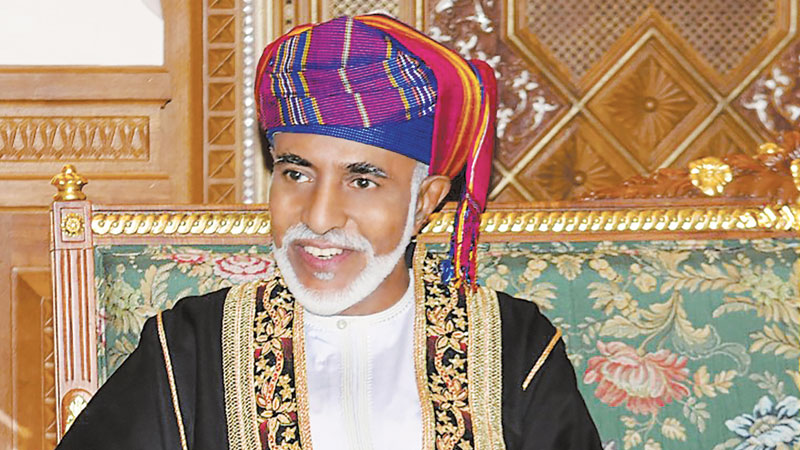


Dr J E Peterson -
In 1974, Ian Skeet published a book titled Muscat and Oman: The End of an Era. With the passing of Sultan Qaboos, it is certainly the end of another era. It was also in 1974 when I first came to Muscat to do research for my doctorate. Many things had changed four years into the Sultan Qaboos era but equally the changes were just beginning.
The port in Muttrah, begun before 1970, was operating but struggling to handle the volume of ships. Al Khuwair consisted of open land punctuated by a couple of villages; a four-wheel-drive vehicle was needed to climb over the dunes to get to the beach where the Muscat Intercon was later built.
The Muttrah sea road had just been finished but travel between Muscat and Muttrah was still along the narrow road clinging to the rocks and climbing up the pass from Riyam. Much of old Muscat remained intact and the new palace was just being constructed.
Bait Fransi was still occupied by the oil company and Sayyid Abbas bin Faisal, the new Sultan’s great uncle, resided in another of the grand old houses just around the corner. Movies were screened on the tennis court by the British Embassy in the moon shadow of Fort Jalali.
The road to Nizwa was graded but unpaved; a running start was needed to cross the wadi at Fanja and race up the steep hill into and through the date gardens. Jabal Akhdhar was accessible only by air or by foot. In Salalah, the rudimentary Dhofar Hotel was situated only steps from the beach and the old palace.
In the succeeding decades, metropolitan Muscat kept expanding along the coast while the villages that originally comprised Salalah congealed into Oman’s second city. Oman created a road network in shorter time and better quality than its Gulf neighbours. Schools and health clinics proliferated alongside new homes in all the towns. By the 1980s, the country was ready for its first university.
I came back to live in Muscat during the 1990s when so much had been transformed. Bits of the old Bait al Falaj airfield could still be seen behind the high-rises lining the new financial district boulevard.
Al Khuwair had mushroomed into the centre of government and Seeb had grown beyond recognition and continued to expand. The winding road snaking behind Madinat Qaboos had been supplanted by the bustling Sultan Qaboos Street. The old caravan road still wound around the base of the mountains and climbed over the hill between Bausher and Ghala; now it is buried below the Muscat Expressway.
Even more impressive than the tangible development was the transformation of Oman’s people. At first, heavily dependent on expatriates to staff the new government, the schools and the hospitals, the Sultanate was producing an ever-expanding cadre of educated and dedicated Omanis to take over those jobs.
In those early years after 1970, if an Omani was asked what he or she thought of their new ruler, the response invariably was “before Qaboos there was nothing; after he became Sultan everything changed’’.Sultan Qaboos’ vision guided these changes, undoubtedly the result of his unique experience as the recipient of both a Western education in Britain and an Omani Islamic education in Salalah.
Sultan Qaboos came to the throne at a singular junction in time. Oil production was just beginning, thus creating the revenue engine that would allow the country’s unparalleled socioeconomic development and a standard of living unsurpassed in Omani history.
Oman’s long isolation was reversed by a fruitful foreign policy based on developing good relations with all its neighbors and beyond. While wars and unrest roil the region, Oman itself has remained peaceful and in harmony.
Oman has come a long way during the fifty years under the leadership of HM Sultan Qaboos. Few countries have achieved so much in such a short time.
HM Sultan Qaboos laid the foundations of Oman’s present and provided the guide for tackling the challenges that lay in Oman’s future. I feel honoured to have witnessed most of these fifty years and to have met His Majesty.
There is much work remaining to be done and progress to be realized. The new era begins today and one can not only hope but feel confident that Oman’s remarkable march over the past 50 years will continue unabated.
The writer is a historian and analyst of international affairs (www.JEPeterson.net). He has published more than a dozen books, including Oman in the Twentieth Century, Oman’s Insurgencies and Historical Muscat. He is presently writing a fourth book on Oman since 1970.
Oman Observer is now on the WhatsApp channel. Click here



